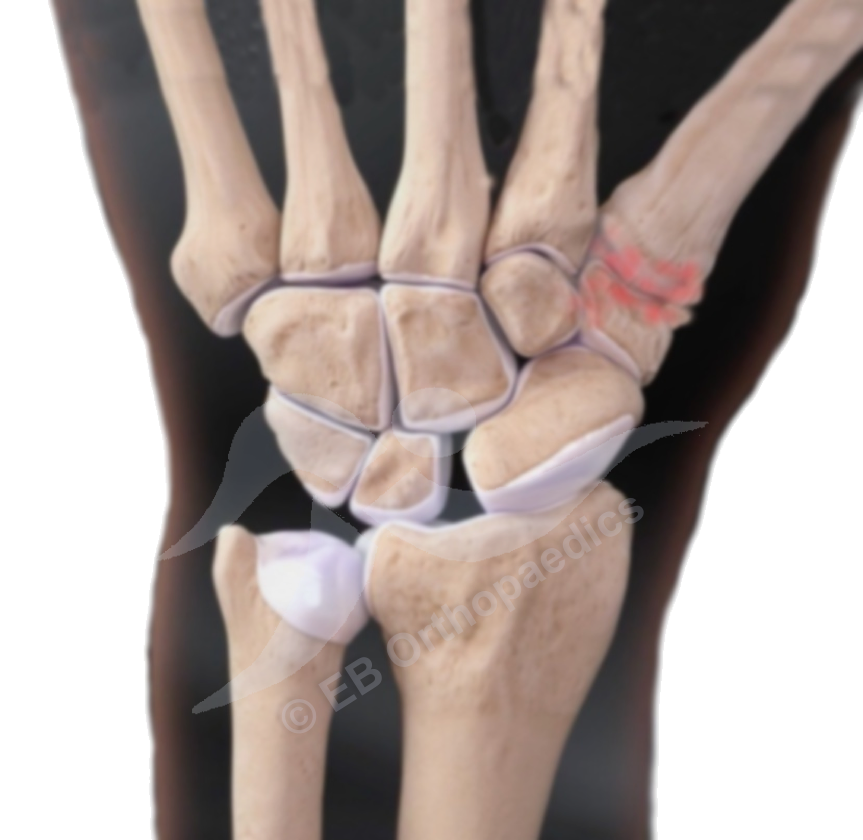Thumb base (carpometacarpal) arthritis

The carpometacarpal joint (CMCJ) is the joint at the base of the thumb where the thumb metacarpal joins the trapezium (one of the wrist bones). This is the joint that allows the thumb to move into the palm.
Arthritis is a process whereby the cartilage carpet in the joint is lost, resulting in bone rubbing directly on bone. This stimulates the body to produce more bone (osteophytes) which can stiffen the joint or cause crunching or clicking.
Thumb CMCJ arthritis is arthritis affecting the CMCJ. While there are many types of arthritis, the commonest is osteoarthritis (‘wear and tear’) that becomes more common with increasing age. Other types of arthritis may occur if there has been an injury to this joint in the past (post-traumatic arthritis), or as part of a body-wide condition such as rheumatoid arthritis.
The main symptoms are pain and stiffness of the thumb which can lead to weakness. The pain tends to be a constant ache and may be worse in cold weather. The thumb is often most stiff first thing in the morning but may ease throughout the day.
While non-surgical treatments do not affect the underling arthritis, they can control the symptoms from it. In the early stages, simply adjusting what you do and how you do it may be sufficient. Regular painkillers may be enough to keep the pain under control and enable regular activities to be performed. A splint may be very helpful to take some of the load off the thumb joint particularly when performing certain activities.
You may find a steroid injection helpful. This may be given if there is uncertainty as to how much of your symptoms are coming from the thumb joint and how much from elsewhere. Injections can provide relief lasting months or longer but the duration of pain relief tends to vary and is often unpredictable.
There are various options of surgical treatment for CMCJ arthritis. Most commonly the bone at the base of the thumb, the trapezium, is removed. Sometimes a small piece of an adjacent bone is also trimmed. This stops the metacarpal bone rubbing on the painful wrist bones. Other options are to fuse the CMCJ (joining the two bones together), or to replace the CMCJ with an artificial joint.
Whichever type of surgery you have, it is usually done through a cut at the base of the thumb and you are in plaster afterwards while it heals.
You will be advised of exercises to strengthen the thumb and help stabilise it. The physiotherapists will also be able to advise you on alternative ways of carrying out activities to avoid excessive strain on your thumb.
Modifying your activities and wearing a splint is often sufficient for most people in the early stages of CMCJ arthritis. When non-surgical treatments have failed, surgery usually provides a reliable improvement in pain and function.